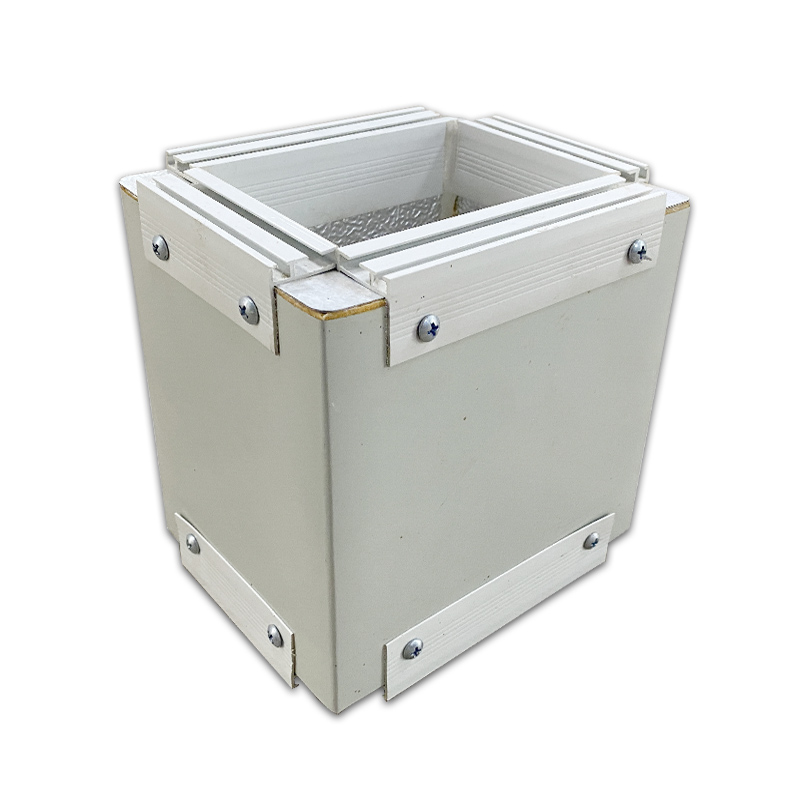Phenolic resin is the earliest industrialized plastic product in the world, while phenolic foam is a newly developed product. Phenolic foam, known as the “king of thermal insulation”, was early used for thermal insulation of missiles and rocket heads. It has become the fastest growing variety of plastics in the United States, Britain, Japan and other developed countries. Phenolic foam material has good flame retardancy, small thermal conductivity, excellent sound absorption and long service life. Because of the above superior characteristics, phenolic foam materials have been widely used in various aspects of the national economy, such as central air conditioning ducts, cold and hot transmission pipelines, clean plants, shopping malls, light body fast loading rooms, refrigerators, refrigerated vehicles, aircraft, ships, hotels, entertainment compartments and other places that need to use fireproof, lightweight, thermal insulation, sound insulation, clean and moisture-proof materials.
The phenolic foam plate is compounded with aluminum foil or color steel to form a sandwich panel, and then added with special flange accessories to form a phenolic composite air duct for central air-conditioning ventilation. The internal and external surfaces of the phenolic composite sandwich panel are coated aluminum foil or color steel, and the intermediate layer is phenolic foam material. Its comprehensive performance has been greatly improved, especially in the mechanical properties, such as bending resistance, compression resistance, brittleness and processing performance, which basically meets the use requirements of air conditioning ventilation pipes.
Air duct connection method: Adopting plug-in PVC bridge cutoff aluminum alloy flange connection, the thickness of the aluminum alloy flange is 1.50mm. The combustion performance of PVC connectors should comply with the current national standard “Classification of Combustion Performance of Building Materials and Products” GB 8624, Class B1, and its wall thickness should not be less than 1.5mm. The flanges of the air duct are connected with PVC plugs, and the plugs should be inserted with moderate tightness, preferably by hand or lightly tapping with a wooden hammer. The four corners of the flange connection should be sealed with sealant to prevent air leakage. The air duct connection should be straight and secure.
Air duct installation related: wall opening, static pressure box, silencer, soft connection, valve installation, air outlet installation, support and hanger installation, etc.
Reinforcement of air ducts: In many cases, the interior of air ducts is directly reinforced with screw rods, including provisions in the Ventilation Technical Regulations. In practical applications, the thermal conductivity of the screw can lead to condensation. Nowadays, we generally adopt the method of adding a plunger and a sleeve rod to reinforce the interior of the composite air duct. This not only increases the strength and makes the composite air duct look more straight, but also largely avoids condensation caused by the internal support of the air duct. The cost is similar to the cost of screw reinforcement, but there are many benefits.
Corner reinforcement: Corner reinforcement of air ducts involves pasting galvanized right angle gaskets with a thickness of over 0.75mm at the four corners of the duct. The width of the right angle gasket is equal to the thickness of the duct sheet, and the side length is not less than 55mm.
The flange of the air duct should be parallel, and the parallel deviation and diagonal deviation should comply with the provisions of the “Technical Specification for Ventilation Ducts” JGJ/T141-2017, with tight and seamless corners; The flange and air duct are fixed with aluminum rivets or self tapping screws, and the self tapping screws are not less than φ four × 10mm, with rivet spacing not exceeding 120mm; When installing the plug-in flange of the air duct, a galvanized right angle gasket with a thickness of 0.75mm or more should be pasted on the four corners of the air duct. The width of the right angle gasket should be equal to the thickness of the air duct sheet material, and the side length of the gasket should not be less than 55mm. The joint should be tightly bonded with adhesive, and the adhesive seam should be uniform, smooth, and tight, without missing.
Post time: Nov-10-2023

